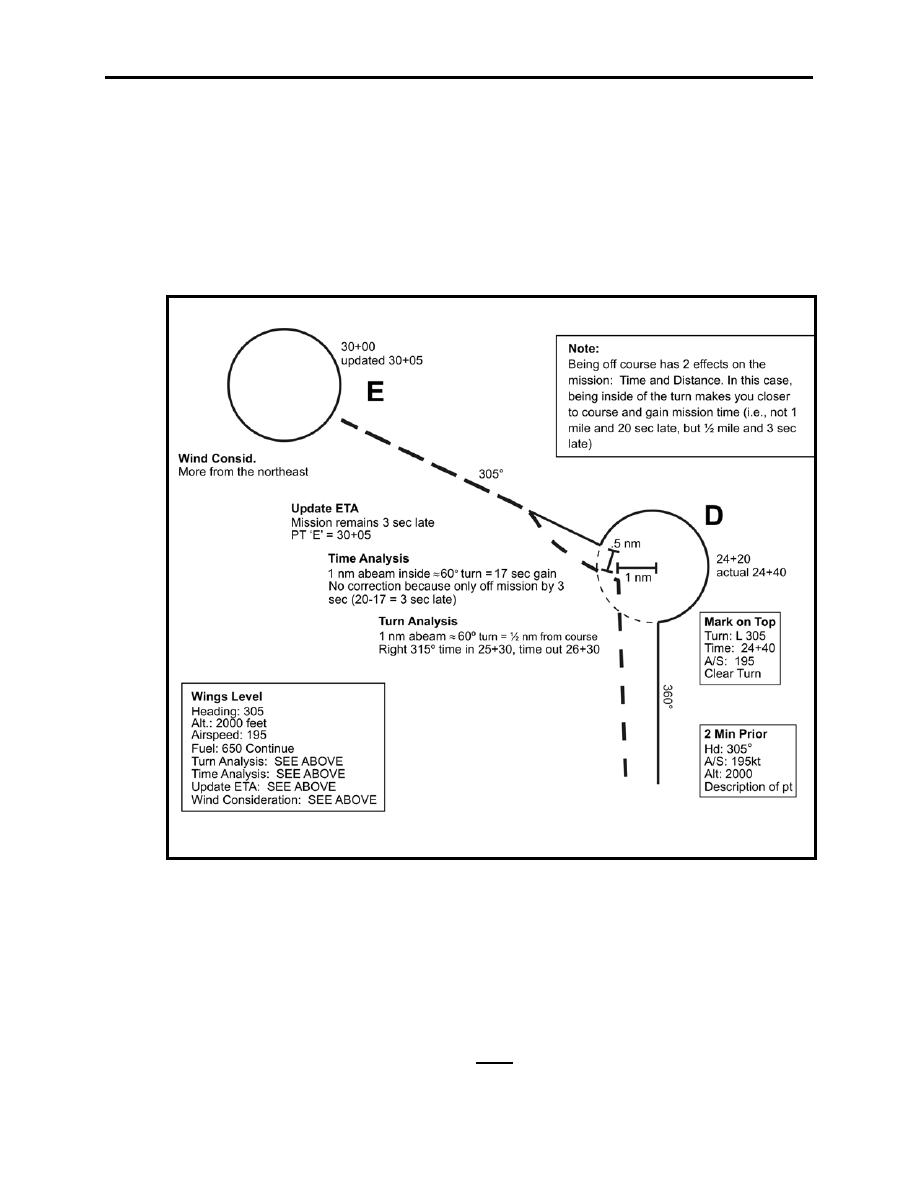 |
|||
|
|
|||
|
Page Title:
Figure 5-3 Turnpoint Procedures |
|
||
| ||||||||||
|
|  T-6A NAVIGATION
CHAPTER FIVE
this example, you should have concluded the wind was actually
more from the north. The aircraft had been crabbing left into the
point and had ended up left. It was also late when crossing abeam
the turnpoint, indicating more wind off the nose. Basically, if the
aircraft is off course due to noticeable changes in wind, discuss
with the pilot a proposed new wind vector/compass quadrant and
your supporting reasoning. Discuss how this new wind will affect
future crabs and airspeeds.
Figure 5-3 Turnpoint Procedures
Heading, Altitude, Airspeed, and Fuel. There are eight steps of the wings level call. In the
T-6A, all are crucial and must be done in order. The first four steps (Hd, Alt, A/S, Fuel) are
safety of flight issues designed to ensure you and the pilot are indeed working together and to
"zoom out" to provide a brief glance at overall mission situational awareness. Headings should
be given as individual digits (i.e., "Three-Zero-Zero"). Altitudes should be given using standard
aviation terminology (one thousand five hundred rather than fifteen hundred). Airspeeds should
be stated in plain English (one-eighty-five not one-eight-five).
FLIGHT PROCEDURES
5-11
|
|
Privacy Statement - Press Release - Copyright Information. - Contact Us |